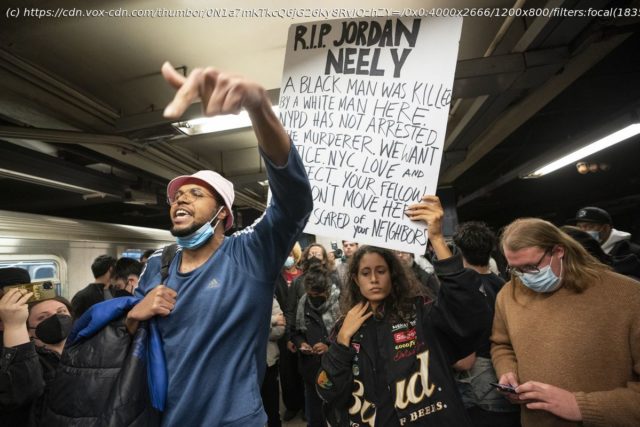Penny fatally choked Jordan Neely, a 30-year-old Black, unhoused man, on the New York City subway.
In early May, Jordan Neely, a 30-year-old Black, unhoused man experiencing mental health issues, died after fellow New York City subway passenger Daniel Penny put him in a chokehold for 15 minutes.
A Manhattan grand jury has now indicted Penny, a 24-year-old former Marine, in connection with the killing. It’s not clear what the exact charges are given that the indictment has yet to be unsealed, and he has yet to enter a plea.
The Manhattan district attorney’s office pursued second-degree manslaughter charges, which carry a maximum sentence of 15 years in prison, after interviewing eyewitnesses, 911 callers, and officers at the scene. Penny turned himself over to law enforcement and was released on $100,000 bail following his initial court appearance in May, sparking widespread outcry.
The case has brought to the forefront several of the systemic issues New York and the country are confronting: crime rates, fears about crime, and how politicians are exploiting those fears seem likely to have played a role. For those gathered in the subway to protest Neely’s killing, he’s become a symbol of New York City’s failure to provide an adequate safety net to vulnerable individuals and protect them from danger and criminalization. Racial justice advocates have also called out the initial delays in the city’s decision to pursue charges against Penny as the latest example of violence toward Black Americans seemingly being condoned by the criminal justice system.
“This is about much more than just this one specific case,” said Bill Neidhardt, a Democratic strategist based in New York. “There’s a clear throughline between the endless demonization of unhoused people and mentally ill people and also the relentless campaign to fan the flames of fear about crime in the city.”
Some city officials have declined to condemn Penny throughout the law enforcement investigation and court proceedings. Immediately after the killing, New York City Democratic Mayor Eric Adams refused to discourage other subway passengers from similarly taking matters into their own hands: “Each situation is different. … We cannot just blanketly say what a passenger should or should not do in a situation like that,” he told CNN.
On Wednesday, he again withheld judgment, issuing a statement saying that he has “the utmost faith in the judicial process, and now that the grand jury has indicted Daniel Penny, a trial and justice can move forward.”
But whatever the result, rendering justice in this one case won’t solve the broader systemic issues that led to Neely’s killing and the initially one-sided public response defending Penny.
“I think [what happened to Jordan Neely] is yet another example of a whole host of responses we have to people who are experiencing homelessness, people with serious psychiatric impairments, race, fear, the jump to ‘my safety, you’re a threat,’” says Kendall Atterbury, a social work expert affiliated with Yale School of Medicine’s Program for Recovery and Community Health. “It’s unconscionable that we keep allowing this to happen.” Crime messaging in New York put the public on edge
Some have come to Penny’s defense, saying his actions were justified, and some media coverage has painted Neely as the aggressor. Headlines from local news outlets initially described Neely as the “Man Who Threatened NYC Subway Riders” and “Man Harassing NoHo Subway Riders” and declared that the rider had tried to “Subdue Him.”
According to one eyewitness who posted a video of the altercation on his Facebook page, Neely yelled that he did not have food or anything to drink, that he was ready to die, and that he didn’t care about facing life in prison. But that eyewitness also told the New York Post that Neely did not attack anyone in the car.
Law enforcement also found no evidence that Neely had become violent or threatened anyone specifically, including Penny, in their investigation. But initial headlines assumed Neely would have become violent if his fellow subway rider had not intervened — assumptions that are, experts say, rooted in years of political fearmongering over a pandemic spike in violent crime in New York City. That wave of violent crime has subsided, but nonviolent crimes were up in 2022 and at the forefront of New York state voters’ minds in the midterms.
“When politicians constantly use New York City as the emblem of danger and violence and they exploit that to motivate their voters, why would we be shocked that people in New York are walking around on pins and needles and afraid all the time?” said Jeffrey Butts, a professor and director of the Research and Evaluation Center at the John Jay College of Criminal Justice.






